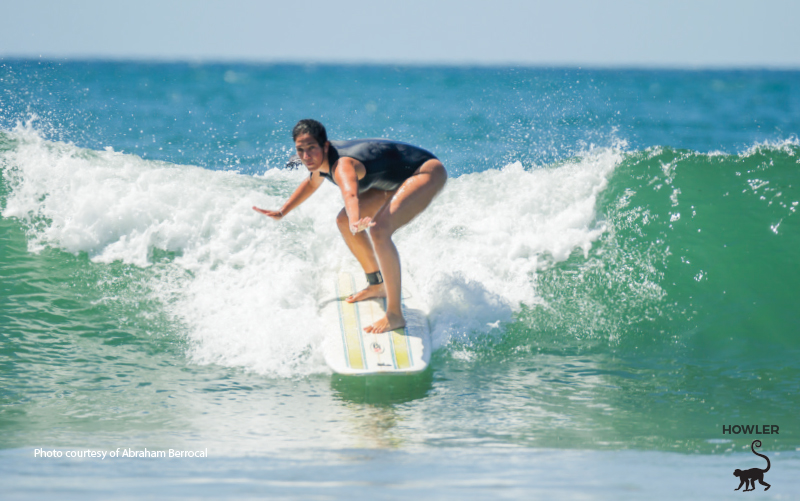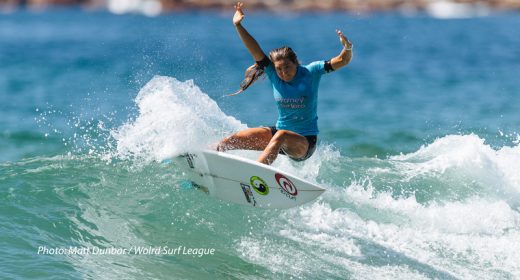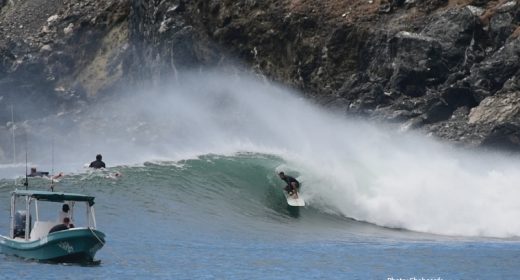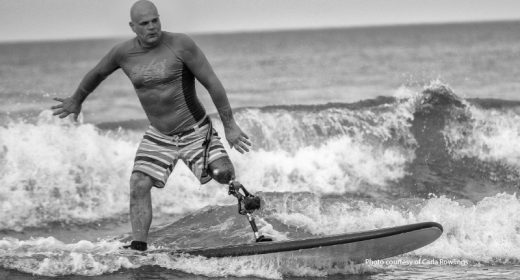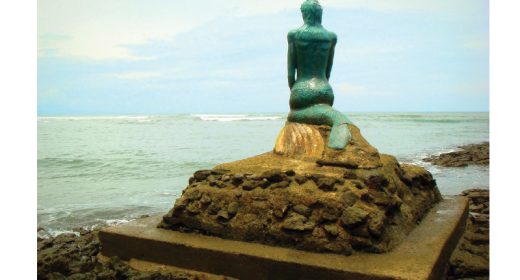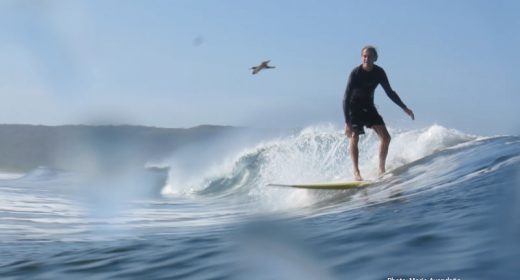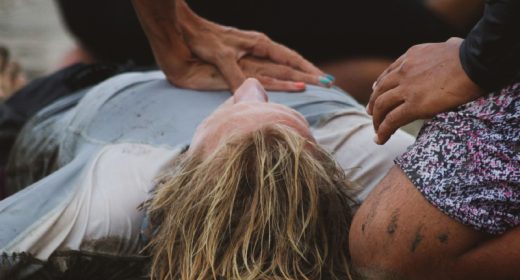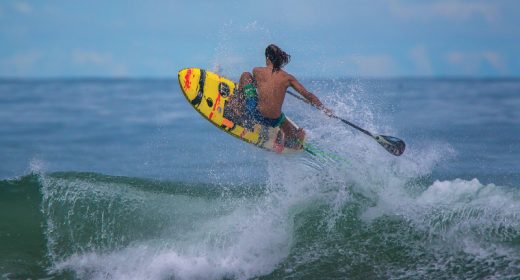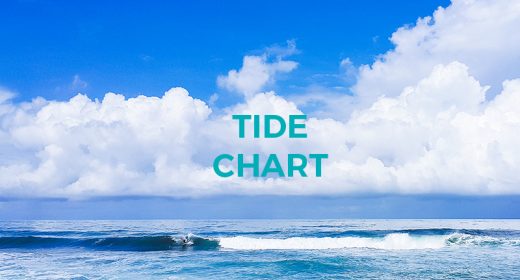
Learn to Surf: Catching the Perfect Wave
- JUN 29, 2019Warning: count(): Parameter must be an array or an object that implements Countable in /home/howlermag/public_html/old/wp-content/themes/new-paper/includes/general.php on line 193
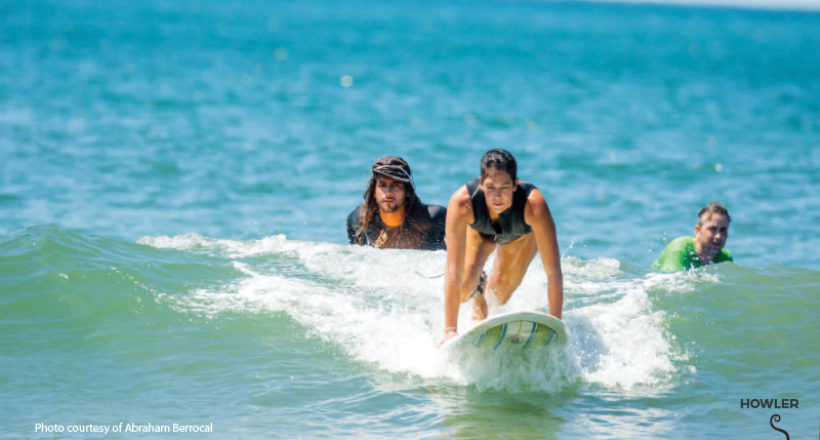
Your Lead Paragrpah goes here
Learn to Surf: Catching the Perfect Wave. Being a Costa Rican city girl from San José, not one of those Ticos who grow up on the beach or head there as often as they can, I had never surfed a day in my life until a few months ago in Tamarindo.
I enjoy traveling, lived in the Big Apple for a while and then moved to Florida. I would constantly get the typical remark, “Oh, so you are from Costa Rica … the surfing there is great!” Yet in truth, I knew nothing about it firsthand.
Having recently moved near Tamarindo, one of our most famous surf towns, I took it upon myself to learn to surf like a pro — well, maybe just learn to surf for starters. Now, after exploring the surf world for a few months, I am ready to share all my insider tips with you.
Learning or instagram moment?
Now you need to ask yourself the following question: are you in it for the long run or just for a weekend vacation? For me, this is a long-term commitment.
Why does this matter? Well it is simple. If you just want to get on the board and have an instagrammable moment, most instructor (plus a photographer) will do. It is relatively easy in small surf with a competent instructor to stand up on the board and have someone snap a picture. This is because they teach you how to stand up on land, then they put you on a big board — basically a surfboard barge — and push you into the wave. However, that does not mean you can surf.
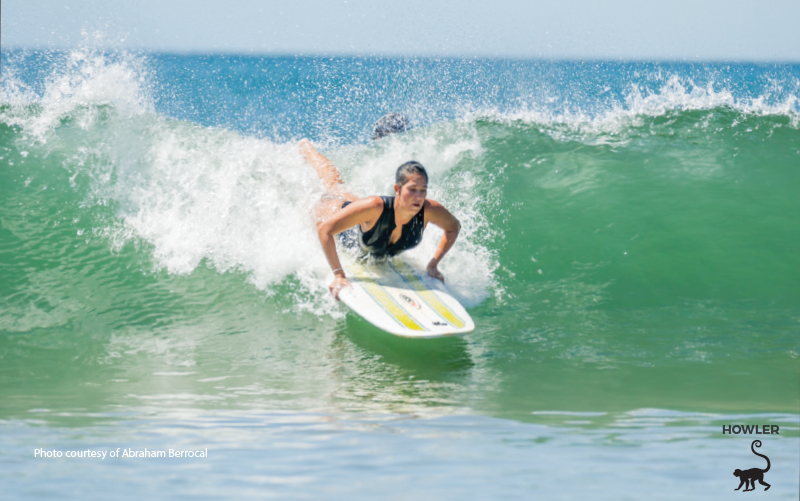
Don’t get me wrong, I’m all about taking the cool pictures. But if you want to really learn to surf, I recommend a minimum of four to eight lessons with an instructor and hundreds of solo surf sessions. Only then can you call yourself “a surfer,” and most importantly, when you have learned surf etiquette (that’s another story).
A reasonable plan is to take four or five lessons to get the basics and practice reps with an instructor, then 10 to 20 solo sessions. Now you are ready for another two or three lessons to get some vital feedback as you are finally understanding waves and how to control your mind and body in them.
But back to finding your instructor: Lessons can be booked at surf shops or surf camps, and the bigger surf towns like Tamarindo and Jacó have local surfers cruising the beach looking to give you a lesson.

Or, you can find yourself a local friend (like me!) and get to know who’s who. Since you probably don’t have the time for this, don’t worry, I’ve done the research! For example, if the hustle and bustle of Tamarindo is a bit much, check out the neighboring community of Playa Grande, whereFrijoles Locos Surf Shop has you covered for anything you need, be it a one-off or an ongoing quest.
In my case, I love the Tamarindo scene — lots of action, lots to look at and lots of options for lessons. It was the perfect spot for me to start to learn. I started at my favorite coffee shop, Pico Bistro, where “Mickey” introduced me to a true Tamarindo local and a great surfer, Ariel. I’ve been surfing with Ariel for some months now and although I’m still not a pro, this is what I’ve learned.
Quality counts
Many surf instructors are used to the one-time lesson for tourists who just want to feel excited about getting on a board. This isn’t the way to go if you are a serious beginner looking to learn good technique.
Lucky for me, Ariel not only took the time to teach me the right technique, but he also taught me what not to do and why (surf etiquette). Then I started paying attention to the dozens of other lessons going on around me, and I could actually distinguish the difference in quality.
The only drawback in being focused on technique is that it’s a slower process. But when you get it, you’ll get it right. Pay attention to the instructor you choose. As I said, most will do for the one-off, but if you want to learn and learn right, get in with the locals. Get someone who teaches, a local surfer. You will be stoked for a multitude of reasons.
Gearing up
Make sure you have the right gear. Surfing does not require much, but it has to serve the right purpose.
If you’re a lady you definitely need a swimsuit made for the action. Definitely check out Howler’s January 2019 cover story, “Sewing a different pattern on and off the Waves,” for some of the leading designers around.
Tamarindo shoppers can find the cutest styles by national designer Andrea Pizarro at both Del Toro and Mi Tribu stores. (Insider tip: Maaji swimwear can be found at GirlFish, the hidden blue casita next to El Chiringuito.) Also Azul Profundo in the heart of Tamarindo has super-cute suits too.
If you are a guy, as proud as you may be of your six-pack, to avoid getting all scratched up by the foam top boards, get a rash guard. Or just ask your instructor to rent you one if you are doing the one-off lesson.
If you are in it for the long-haul, you will need a board. Your first board is vital, but it won’t be your last! Get the right board to learn on and it will be a keeper. Don’t buy one before your first few lessons; get wet and learn what you need.
Playa Grande’s Frijoles Locos is a great place to get a used board or a new one off the rack, Drew will take care of you. If you feel like a pro, get your custom board shaped at Cheboards, a great Tamarindo-based board shaper and surf shop! JD will take care of you.
Last but not least, stay protected! It might look funny, but apply a ton of sunblock to your face and all uncovered areas. Even on a cloudy day, Costa Rica’s sun rays ain’t no joke! Remember to be eco-conscious and use an ocean and reef-safe sunblock. Old-school sunblocks contain chemicals harmful to ocean life.
App for that
When to surf? Lucky for you, your instructor will tell you and this is part of learning to surf. Become a surfer, don’t be a “Barney” (watch the surf classic film “North Shore”). But if you want to get ahead, continue reading Howler’s surf section and all the back issues online. But also download an app like MSW (MagicSeaWeed). It has surf cams and allows users to upload reports and photos — sort of like the Waze of waves.
Beginner tips: Don’t surf big waves; stay away from them and the crowd!
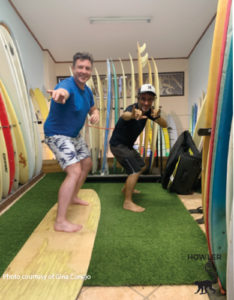 Your first lesson should be 60 percent on land, learning technique, stretching and paddling, and getting practice standing up on the board.
Your first lesson should be 60 percent on land, learning technique, stretching and paddling, and getting practice standing up on the board.
Once in the waves, don’t get distracted by paddling, let your instructor push you into the wave. Focus on standing up with the right technique and foot placement on the board.
That should get you started!
No matter what your age or ability, it might be “go time” to get your surfing feet wet in pura vida. Surf on!
Other HOWLER Surf Profiles
Malakai Marinez
Valeria Salustri
Costa Rica Surf Spots
Boca Barranca
Santa Teresa
Playa Negra
Playa Tamarindo
Playa Dominical
Playa Langosta
Ollie’s Point
Playa Avellanas
Pavones
Witch’s Rock
Playa Grande
HOWLER Surf Science
What Makes a Wave Spit?
The Climate is Changing, Will There Be Waves?
Hurricanes in Costa Rica?
The Importance of Swell Angle
What Makes a Good Surf Spot
What Makes a Good Surf Spot 2
Why Do Waves Break?
Cold Water in Costa Rica?
The Science of Stoke
Tamarindo Spot Check
The Papagayo Winds
How Waves Are Created


